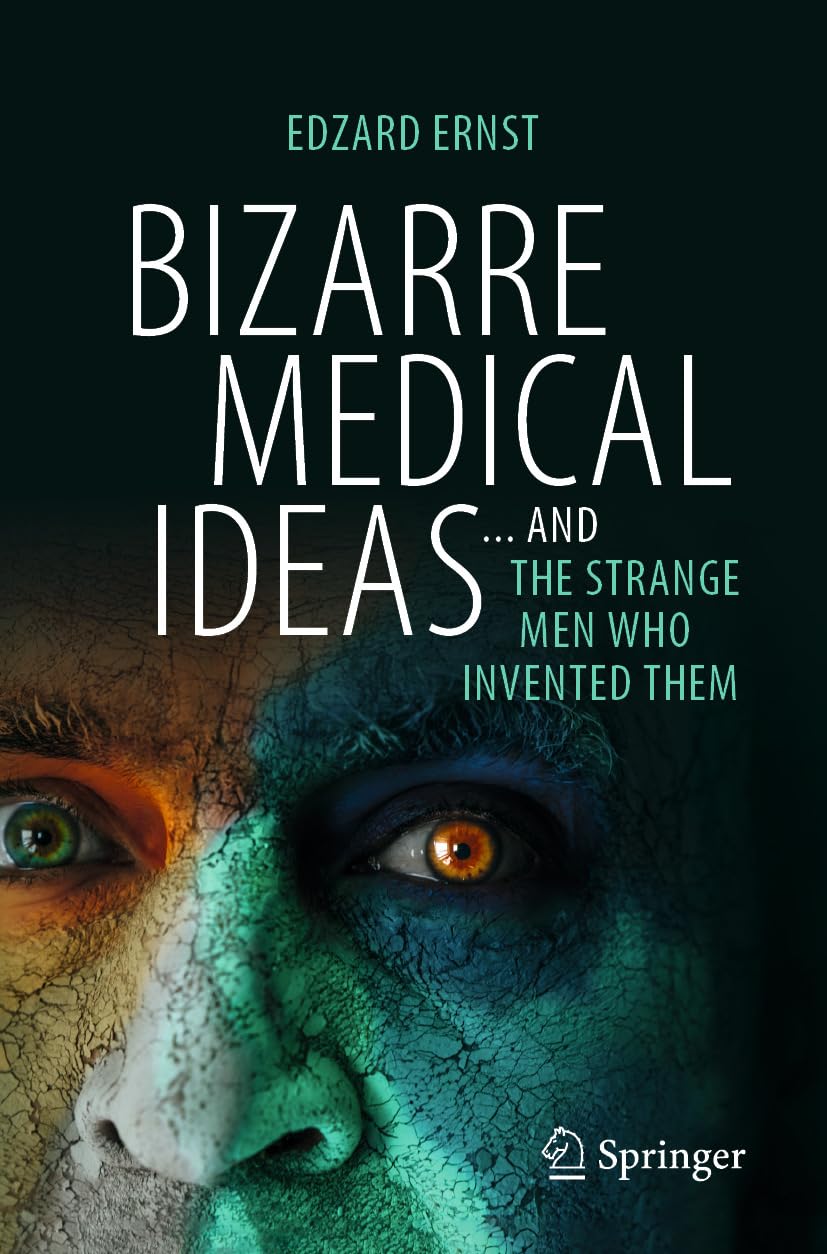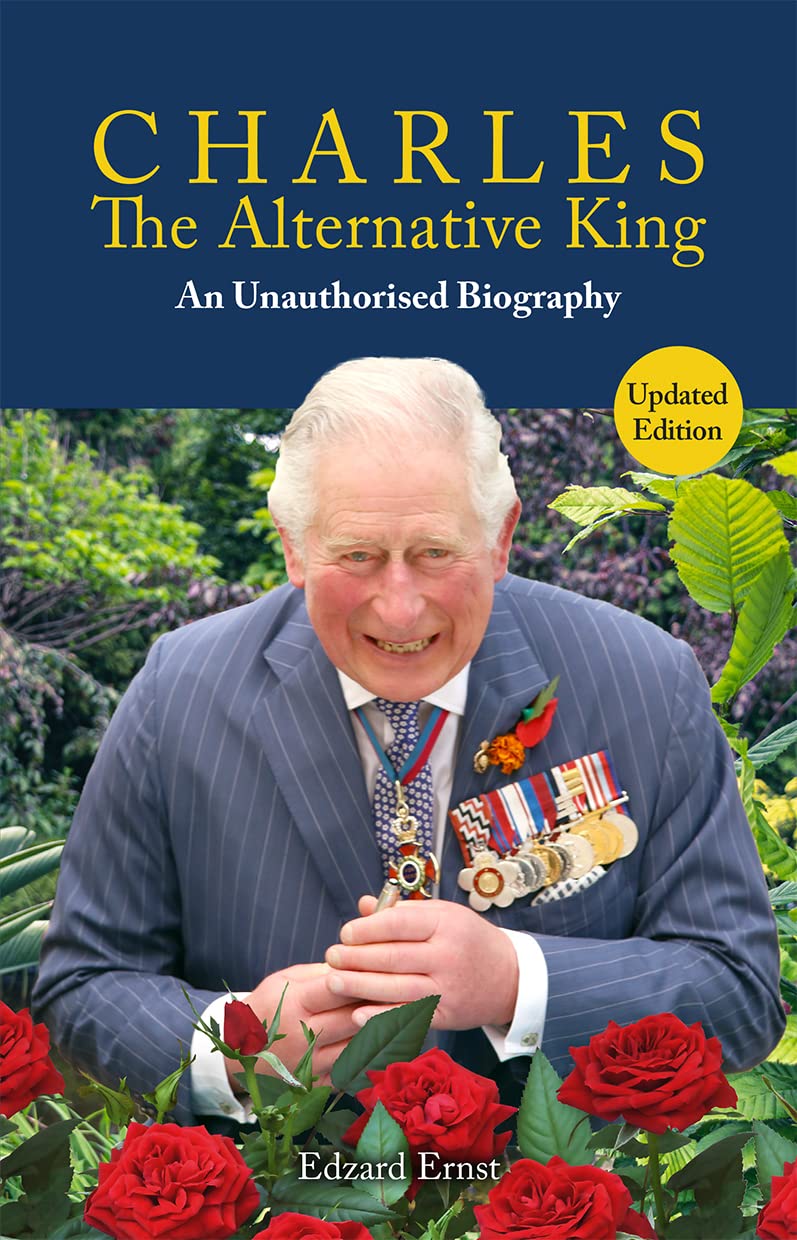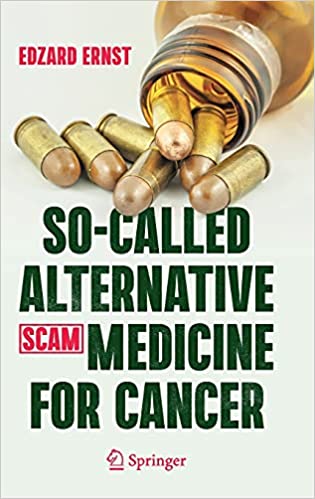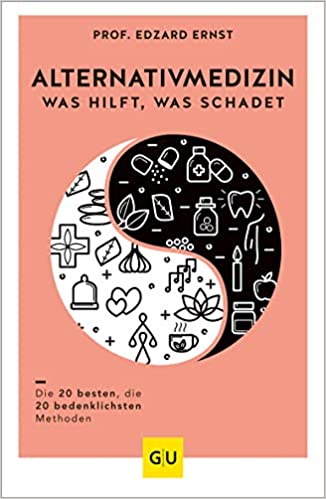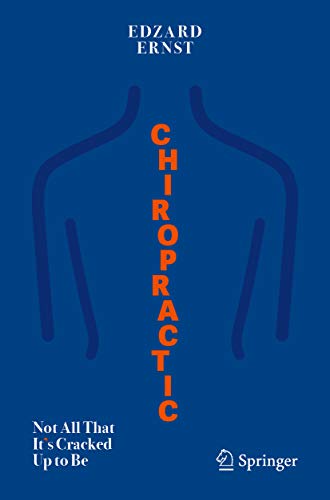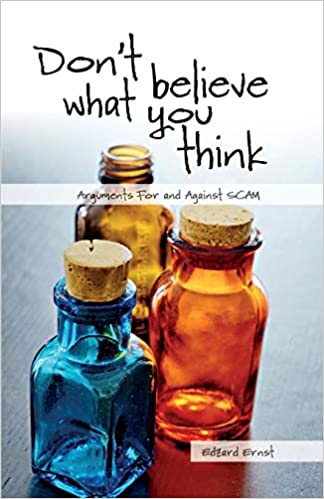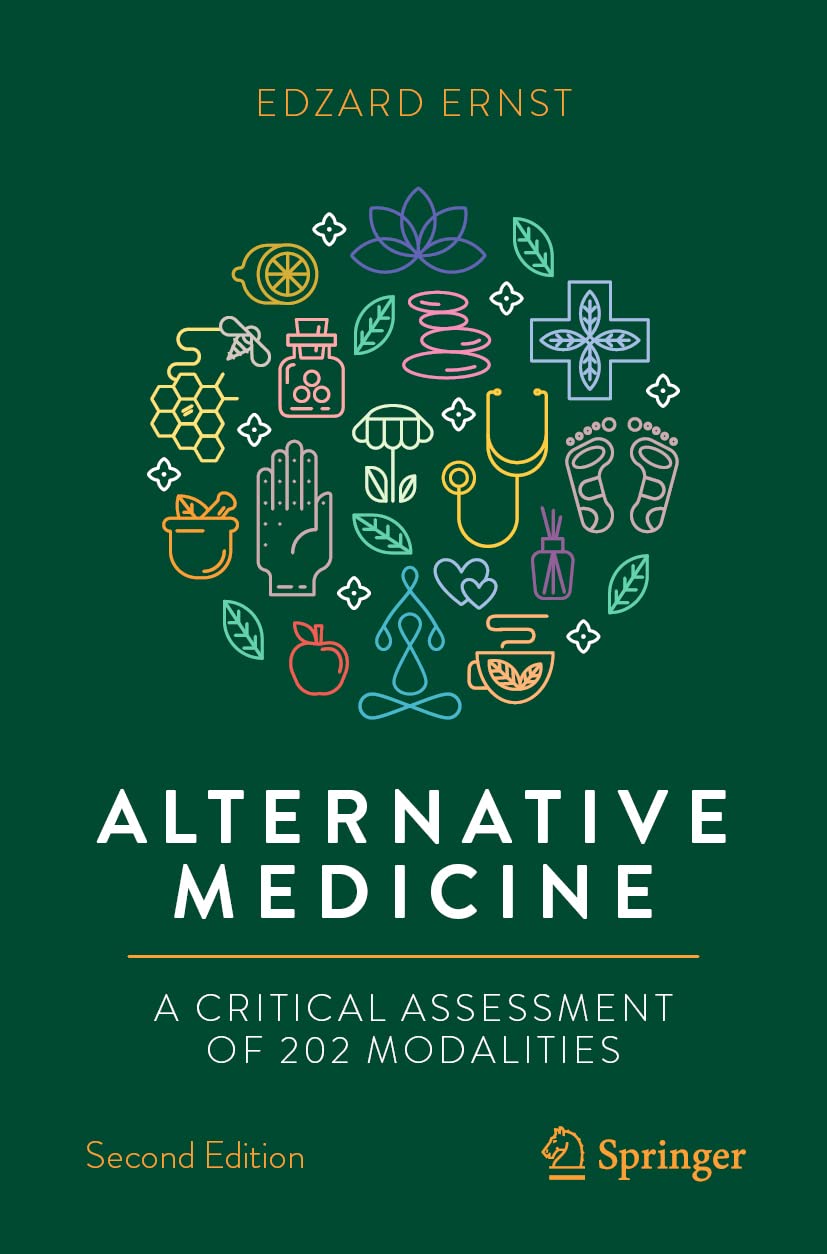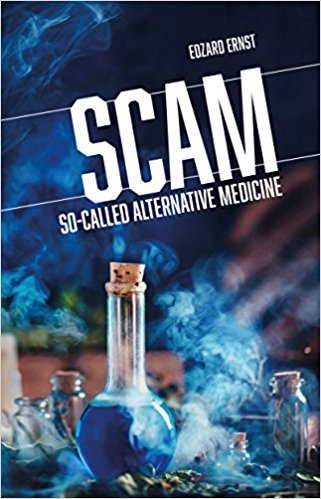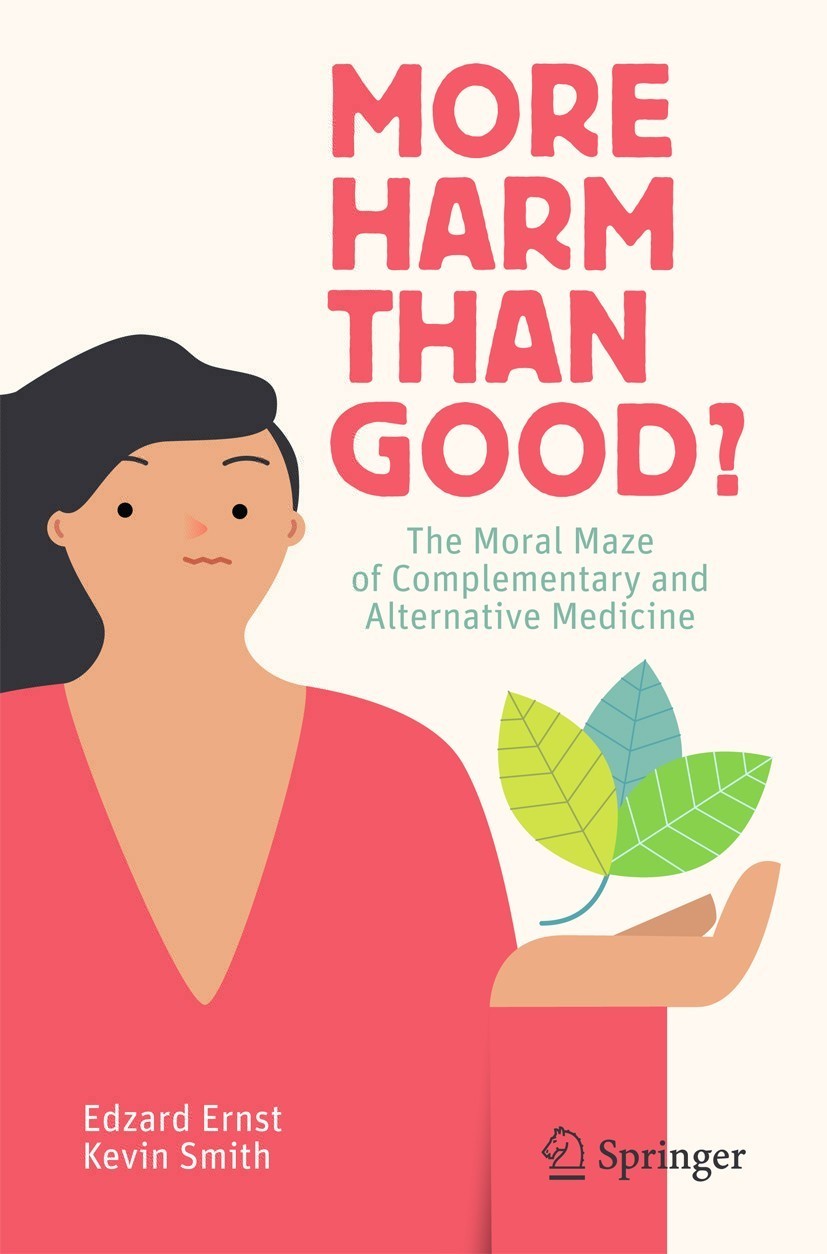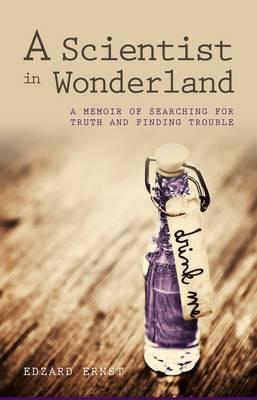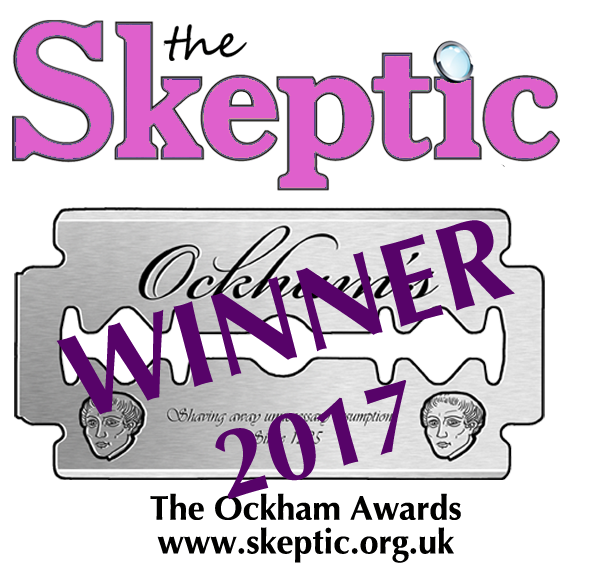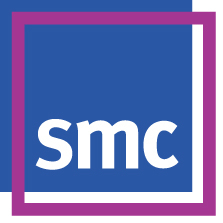‘Yes to Life’ is a UK cancer charity that promotes so-called alternative medicine (SCAM). It has featured before on my blog:
Uncharitable charities? The example of ‘YES TO LIFE’
‘Yes to Life’ also runs a radio show:
The Yes to Life Show is presented by Robin Daly, Founder and Chairman of the UK registered charity Yes to Life. Robin set up Yes to Life nearly two decades ago, following the experience of supporting his youngest daughter Bryony through cancer three times. The extraordinary difficulties he found that faced people in finding and obtaining the help they wanted, spurred him into creating a charity to make a difference to this tragic predicament.
Although very familiar with the territory, Robin is not a cancer specialist or any kind of health expert. In presenting the show, he is always looking for a ‘layman’s’ understanding of the complexities of cancer and the issues surrounding it that is accessible to all…
… As we rapidly approach the point where half of us will get cancer, there are some pretty stark questions facing us that the show attempts to throw light on:
- What are we doing wrong?
- Why has the colossal investment in research produced so few answers?
- What are we missing?
- And crucially to all the above – What is cancer?
_________________
The website of Yes to Life Show offers a wide range of previous broadcasts, many featuring individuals who are also familiar to this blog such as Michael Dixon or Elizabeth Thompson. I listened to sections of Elizabeth’s recordings:
I find this recording and many others recordings available on the Yes to Life Show (please do make the effort and listen to some of them!) concerning and at times outright irresponsible and dangerous – no wonder that the Yes to Life Show includes this ‘Disclaimer’:
Please note that all information and content on the UK Health Radio Network and all its radio broadcasts and all its publications and all its websites are provided by the authors, producers, presenters and companies themselves and is only intended as additional information to your general knowledge. As a service to our listeners/readers our programs/content are for general information and entertainment only. The UK Health Radio Network does not recommend, endorse, or object to the views, products or topics expressed or discussed by show hosts or their guests, authors and interviewees. We suggest you always consult with your own professional – personal, medical, financial or legal advisor. So please do not delay or disregard any professional – personal, medical, financial or legal advice received due to something you have heard or read on the UK Health Radio Network.
The UK Health Radio Network makes no warranties or representations of any kind that the services provided on the radio broadcasts or web sites will be uninterrupted, error-free or that the radio broadcasts or web sites, or the servers that hosts the radio broadcasts or web sites are free from viruses or other forms of harmful computer codes. In no event will the UK Health Radio Network, its employees, distributors, advertisers, syndicators or agents be liable for any direct, indirect or consequential damages resulting from the use of this web site. This exclusion and limitation only applies to the extent permitted by law.
So, the show is “for entertainment only”. I can easily see why:
as advice for cancer patients (or carers), it would be outright dangerous!
Mistletoe is a popular so-called alternative medicine (SCAM) often advocated for cancer. It has featured regualarly on this blog:
- A cancer patient died after taking a herbal mixture containing mistletoe
- A systematic analysis of the mistletoe prescriptions used in clinical studies
- Prof Harald Walach reviews mistletoe and arrives at a positive conclusion
- Mistletoe treatment for cancer is useless and should be discouraged
- Mistletoe for cancer: Does it improve patients’ quality of life?
- Mistletoe for cancer: the saga continues
- Mistletoe, a cancer therapy? You must be joking!
- Suzanne Somers has died – another victim of so-called alternative medicine?
Now concerns about the safety of mistletoe therapy have re-surfaced.
One man was diagnosed with a neuroendocrine neoplasia of the terminal ileum that had metastasised diffusely to the liver. The patient also developed symptoms of carcinoid syndrome (flushing, sporadic diarrhoea and bronchospasticity). Somatostatin analogue therapy was started after surgical treatment in 11/2020.
The patient had independently started mistletoe injection therapy. After six weeks, he complained of several localised reactions at the injection sites, each with a very itchy ‘hazelnut-sized’ hardening. He was then advised to halve the mistletoe dose and continue the therapy. However, the local findings did not improv; the physician therefore prescribed a further dose reduction.
As a result, the local findings improved, the patient increased the dose. 30 minutes after the injection of the high dose, he felt an increasing feeling of warmth, tingling, nausea and discomfort, as well as shortness of breath and an urge to defecate. When he went to the toilet, he also experienced visual disturbances and dizziness, and eventually fell unconscious. The emergency doctor called by his wife admitted him to the nearest hospital with the diagnosis of anaphylactic shock. After inpatient diagnostics – with exclusion of a cardiopulmonary event – and successful treatment, the patient was able to leave the hospital on the second day.
Mistletoe therapy has become more popular as a supportive cancer therapy. Therefore, rare but serious to life-threatening side effects should be known to the therapists and patients, the doctors of the patient stress. The most common adverse events of mistletoe therapy are skin reactions at the injection site (pruritus, urticaria, redness ø ≤ 5 cm). One review noted that the rate of serious adverse events from mistletoe therapy was < 1 per cent. According to the above-mentioned guideline, the following are very rare side effects:
- hypersensitivity and anaphylactic reactions,
- intensification of autoimmune reactions,
- local lymphoma infiltrate at the injection site.
Some research have suggested that aromatherapy with lavender essential oil can be effective in reducing pain and anxiety in various medical settings. Yet, the efficacy of lavender aromatherapy in the postoperative setting after cesarean delivery is less well-studied. This study aimed to assess the effectiveness of lavender essential oil therapy in the management of pain and anxiety after cesarean delivery.
This was a monocentric randomized controlled double-blind trial conducted over a period of five months during 2023. A hundred women undergoing c-sections under spinal anesthesia were enrolled and randomly assigned; using block randomization of 4 items per block with allocation ratio 1:1, into two groups:
- The aromatherapy group received inhaled Lavender essential oil.
- The placebo group received distilled water instead.
The primary outcomes were pain (at rest and after mobilization) and anxiety levels and after the intervention.
A total of 100 women were included (50 women in each group aromatherapy and the placebo group). The two groups were comparable regarding baseline characteristics and pre-intervention parameters with no statistically significant difference. After the intervention, the pain at rest (38,76 ± 22,9 vs. 23,84 ± 18,01; p < 0.001), the pain after mobilization (60,28 ± 23,72 vs. 40,12 ± 22,18; p < 0.001), and degree of anxiety (46,76 ± 6,59 vs. 44,3 ± 5,17; p = 0.03) were all significantly lower in the aromatherapy group. No adverse effects were reported by participants in both groups.
The authors concluded that aromatherapy using Lavender essential oil is effective in reducing pain and anxiety after cesarean delivery without adverse effects.
I beg to differ!
The authors point out that, to address the potential for participants to differentiate between the lavender and the placebo based on olfactory cues, they were informed that they would receive a natural inhalation product; however, they were not informed that it was an essential oil or specifically lavender. This is a lame attemp to prevent patients from guessing in which group they were. I doubt that it was successful. As a minimum, the authors should have checked whether binding was achieved!
Yes, it is difficult to patient-blind such studies. But it is possible. For instance, the control arm might have received an arificial oil with a lavender scent which aromatherapists claim to be ineffective. Alternatively two different essential oils could have been tested – lavender against an oil that is not said to affect pain and anxiety. These options are fairly obvious and well-known to aromatherapists. Why then were they not incorporated? I suspect because the trialists suspect that this would not produce the desired result.
As it stands, the honest conclusion should be something like this: aromatherapy using Lavender essential oil might reduce pain and anxiety after cesarean delivery. Whether this is due to a specific effect of the oil or the non-specific effects of expectation needs to be seen.
In the past, I have supervised dozens of degree students – I estimate the total number to be around 50! Most of them were in Munich, a few in Hannover, some in Vienna and around 10 in Exeter. Almost without exception, I enjoyed this work, mostly perhaps because each thesis had a time limit and at its end there was a joyful outcome. I remeber only two degree projects that were started but failed to conclude.
The degrees we managed at Exeter were particularly fun. Many of the students came with their own funds from abroad, and we were able to learn from them as much as they learned from us.
Here are just some examples of the papers that came out of these efforts:
- Ernst E, Pittler MH. Alternative therapy bias. Nature. 1997 Feb 6;385(6616):480. doi: 10.1038/385480c0. PMID: 9020351.
- Pittler MH, Vogler BK, Ernst E. Feverfew for preventing migraine. Cochrane Database Syst Rev. 2000;(3):CD002286. doi: 10.1002/14651858.CD002286. Update in: Cochrane Database Syst Rev. 2004;(1):CD002286. doi: 10.1002/14651858.CD002286.pub2. PMID: 10908545.
- Park J, White A, Stevinson C, Ernst E, James M. Validating a new non-penetrating sham acupuncture device: two randomised controlled trials. Acupunct Med. 2002 Dec;20(4):168-74. doi: 10.1136/aim.20.4.168. PMID: 12512790.
- Kanji N, White AR, Ernst E. Autogenic training reduces anxiety after coronary angioplasty: a randomized clinical trial. Am Heart J. 2004 Mar;147(3):E10. doi: 10.1016/j.ahj.2003.10.011. PMID: 14999212.
- Habacher G, Pittler MH, Ernst E. Effectiveness of acupuncture in veterinary medicine: systematic review. J Vet Intern Med. 2006 May-Jun;20(3):480-8. doi: 10.1892/0891-6640(2006)20[480:eoaivm]2.0.co;2. PMID: 16734078.
Today, I regualry receive emails from foreign researchers who want to join my team.
- Some say they want to do a PhD.
- Others already have a higher degree and just want to join us for a specific research project.
Almost all offer to bring their own funds.
I used to respond enthusiastically and encourage all suitable candidates to come and work with us. Over the years, we thus welcomed in Exeter numerous researchers from all corners of the planet. A good proportion of our published papers is based on the research that originated from these initiatives.
When I retired some 10 years ago, the emails from students who were keen to join us did not stop. Obviously, I now had to disappoint all the applicants. For the next ~7 years, I wrote individual replies to all the applicants explaining that my department had been closed. Since about three years, I have stopped doing this.
Why?
I certainly do not want to offend anyone. Yet I figure that, if an applicant finds my published research and thus decides that he or she would like to join my team, but is unable to do even the most minimal research telling him/her that the Exeter department had been closed, he or she cannot be a serious contender for conducting decent research.
So, indead of all these individual emails to people who want to join my team, I hope that publishing this blog post and statedment will do the trick:
I am sorry to not be able to accommodate students any longer.
My department closed years ago!
PS
Details about the closure can even be found on Wikipedia:
Ernst was accused by Prince Charles’ private secretary of having breached a confidentiality agreement regarding the 2005 Smallwood report. After being subjected to a “very unpleasant” investigation by the University of Exeter, the university “accepted his innocence but continued, in his view, to treat him as ‘persona non grata’. All fundraising for his unit ceased, forcing him to use up its core funding and allow its 15 staff to drift away.”[15]
Writing in 2022, after Charles’ accession to the throne, Ernst said, “There never was a formal confidentiality agreement with signature etc. But I did feel bound to keep the contents of the Smallwood report confidential. The investigation by my University was not just ‘very unpleasant’, it was also far too long. It lasted 13 months! I had to take lawyers against my own University! In addition, it was unnecessary, not least because a University should simply establish the facts and, if reasonable, defend its professor from outside attacks. The facts could have been established over a cup of tea with the Vice Chancellor in less than half an hour. When my department had been destroyed in the process, I retired voluntarily and was subsequently re-employed for half a year to help find a successor. In retrospect, I see this move as a smart ploy by the University to keep me sweet and prevent me from going to the press. A successor was never hired; one good candidate was found but he was told that he had to find 100% of the funds to do the job. Nobody of high repute would have found this acceptable, and thus the only good candidate was not even tempted to accept the position.”[27]
He retired in 2011, two years ahead of his official retirement.[9][28] In July 2011, a Reuters article described his “long-running dispute with the Prince about the merits of alternative therapies” and stated that he “accused Britain’s heir-to-the-throne Prince Charles and other backers of alternative therapies on Monday of being ‘snake-oil salesmen‘ who promote products with no scientific basis”, and that the dispute “had cost him his job – a claim Prince Charles’s office denied”.[13][29] According to Ernst, “The snake oil salesman story is an entirely separate issue”, which “happened years later.” He added, “It is true that Charles’s office denied that Charles knew about his 1st private secretary writing to my Vice Chancellor asking him to investigate my alleged breach of confidence.” Ernst claims that as Sir Michael Peat wrote his letter in his capacity as the Prince’s private secretary, Ernst finds that “exceedingly hard to believe.”[27]
Ernst’s book, Charles, the Alternative Prince: An Unauthorised Biography, was published in February 2022. It focuses on Charles’s interest in alternative medicine, with a critical assessment of his views.[30] In 2009, Ernst’s name appeared on a list of supporters of Republic – an organisation which campaigns for the abolition of the British monarchy.[31] However, writing on his website in 2022, Ernst clarified his position: “Even though Charles did a sterling job in trying, I did not become a republican. I do have considerable doubts that Charles will be a good King (his reign might even be the end of the monarchy), and I did help the republican cause on several occasions but I never formally joined any such group (in general, I am not a joiner of parties, clubs or interest groups).”[27]
I was alerted to an article that makes several interesting points about the current popularity of so-called alternative medicine. Here is a section of it:
The rise of alternative medicine invites the question, what is conventional medicine doing, or not doing, that leads to all this alternative medicine? Here are some hypotheses that I invite you to comment on.
1. Time. Over the short span of my career, visits to conventional medicine providers have gotten shorter. A physician with an established practice can make a 20 minute visit work for most patients but for a less experienced doctor, or one seeing new patients with whom they don’t have an established relationship, or even a seasoned practitioner with an established practice who is just having a bad day, 20 minutes is not enough. This leaves patients wanting the greater time and attention that alternative medicine providers usually spend with patients.
2. Better use of placebos. I use the term placebo with absolutely no negative connotations. As I wrote above, and as I have written in this space, the use of the placebo effect, usually in the form of a therapeutic relationship, is a critical part of conventional and alternative medicine. Because conventional medicine does not depend on the placebo effect – your electrophysiology cardiologist can be an uncaring jerk and still effectively ablate your atrial fibrillation – we have gotten lazy in its use.2 Therefore, for the problems for which we have no real solutions, alternative medicine practitioners often do a better job.
3. People value what they pay for. In the US, and in most developed counties, people do not pay directly for their conventional care. On the other hand, it is the rare insurance policy that pays for acupuncture, chiropractic manipulation, or a consultation with a naturopath. Cognitive dissonance occurs when people are faced with the possibility that what they spent their hard-earned dollars on didn’t work. We resolve the dissonance by convincing ourselves that the treatments we paid for did work.
4. The downside of evidence-based medicine. It hurts me to propose this. Practicing evidence-based medicine entails integrating clinical experience and expertise (science knowledge) with the best available evidence from systematic research. […] conventional doctors often use practices not supported by robust studies. Chapter 2 in Ending Medical Reversal tells us how bad we are at knowing something works just based on our practice experience.3 That leaves science. We are in an age where education and an understanding of science can be a liability. Anybody who knows how to use social media can convince millions that something, anything, is supported by “their science.” Many people regard a treatment based on “rebalancing your life force” or “natural immunomodulators” to be as likely to be effective as ones based on actual biochemistry, immunology, and pathophysiology.
Has the articulation of evidence-based medicine opened the door to alternative medicine practitioners? If we all practice (some occasionally, some always) without data, if we can all quote “clinical experience”, if we all claim that “science” supports our treatment, what does conventional medicine offer that alternative medicine cannot?
In my ideal world, conventional and alternative practitioners would work together. Conventional doctors would diagnose, treat, and prognosticate as best as they can. They would nurture helpful therapeutic alliances with patients. They would also recognize that there are many symptoms that we cannot adequately treat and syndromes that we do not yet understand. Patients with these symptoms and syndromes would be referred to alternative medicine providers. These providers would see if what they have to offer can help. They would also refer back to traditional doctors if the situation changed, progressed, or if findings concerned them.
__________
2 It is not uncommon that I have to encourage trainees to “sell” their recommendations. This is important not only to get the patient to try the meds but because, in the short term at least, belief that a treatment will work might be the most important aspect of its pharmacology.
3 I still haven’t gotten over the commenter who, after I wrote that one of the things that makes me think masks are effective for COVID is that I worked, unvaccinated but masked for 9 months without getting COVID, asked me if I also put tinfoil inside my white coat.
END OF QUOTE
I disagree with several points the author makes here. Nevertheless, his overall notion -namely that conventional medicine is partly the cause for the popularity of so-called alternative medicine – is correct, in my view. I have often stated that modern medicine often lacks time, compassion, empathy and understanding. Yet patients frequently crave these qualities. Many practitioners are particularly good at providing them, and it is little wonder that patients then seek their help.
The bottom line is that many conventional medics might need to re-learn the necessary skills; and for doing so, they could do worse than to look at the ‘bed-side manners’ (as we used to call this aspect of patient care) of practitioners of so-called alternative medicine.
THE SUN (…yes, I know! …) reported last Sunday that figures from 20 trusts show they forked out for questionable treatments for more than 3,000 patients. Treatments also including acupuncture and aromatherapy cost a total of £269,000. If the figure is applied across all 120-plus trusts the true cost could be well over £1.5 million. Hull University Teaching Hospitals spent the most, at £170,000.
The Taxpayers’ Alliance, which did the analysis, said: “With long waiting lists, quack remedies cannot be allowed to divert precious resources.” Alternative medicine expert Dr Edzard Ernst said: “The NHS often uses complementary medicine rarely based on good evidence but on lobbying of proponents of quackery.”
End of quote
Whenever I am asked by journalists to provide a critical comment on so-called alternative medicine (SCAM), I have mixed feelings. On the one hand, I find it important to get a rational message out, particularly into certain papers. On the other hand, I dread what they might do with my comment, particularly certain papers. If I had £5 for every time I have been misquoted, I could probably buy a decent second-hand car! This is why I nowadays tend to give my comments in writing via e-mail.
To my relief, THE SUN quoted me (almost) correctly. Almost correctly, but not fully! Here is the question I was asked to respond to: NHS statistics show the health service spending more than £250,000 on complementary and alternative medicines last year. Do you think this is a sensible use of NHS funding? Are the benefits well proven enough to spend taxpayer money on these therapies?
And here is my attempt to respond in a concise way that SUN readers might still understand:
Complementary medicine is an umbrella term for more than 400 treatments and diagnostic techniques. Some of them work but many don’t; some are safe but many are not. If the NHS would spend £250000 – a tiny amount considering the overall expenditure in the NHS – on those few that do generate more good than harm, all might be fine. The problem, I think, is that the NHS currently uses complementary medicine rarely based on good evidence but often based on the lobbying of influential proponents of quackery.
As you see, it is good to deal with requests from journalists in writing!
This pragmatic, randomised controlled trial was conducted between September 2018 and February 2021 and compared the difference between primary homoeopathic and conventional paediatric care in treating acute illnesses in children in their first 24 months of life. It was conducted at the Central Council for Research in Homoeopathy (CCRH) Collaborative Outpatient Department of the Jeeyar Integrated Medical Services (JIMS) Hospital in Telangana, India, a tertiary-care hospital that provides integrated patient-centric care, using homoeopathy and Ayurveda alongside conventional medicine.
One hundred eight Indian singleton newborns delivered at 37 to 42 weeks gestation were randomised at birth (1:1) to receive either homoeopathic or conventional primary care for any acute illness over the study period. In the homoeopathic group, conventional medical treatment was added when medically indicated. Clinicians and parents were unblinded.
The study’s primary outcome was a comparison of the number of sick days due to an acute illness experienced during the first 24 months of life by children receiving homoeopathic vs. conventional treatment. Sick days were defined as days with any acute illness (febrile or afebrile) reported by the parent and confirmed by the physician. Febrile illness was recorded when body temperature, measured via the ear canal, exceeded 37.5 °C.
The secondary outcomes compared were as follows:
- The number of sickness episodes, defined as illness events (febrile or afebrile), reported by the parent and confirmed by the physician.
- Number of respiratory illness episodes and days during the 24 months. Respiratory illnesses included infections in any part of the respiratory tract (nose, middle ear, pharynx, larynx, trachea, bronchi, bronchioles, and lungs) .
- Number of diarrhoeal episodes and days during the 24 months. Diarrhoea was defined as three or more episodes of watery stool/day, with or without vomiting, with indications of dehydration, weight loss, or defective weight gain.
- Anthropometric data included weight (measured by electronic scales to the nearest 5 g), height (measured in triplicate to the nearest 0.2 cm using a rigid-length board), head circumference (HC), and mid-upper arm circumference (MUAC) (measured with a standard measuring tape to the nearest 0.2 cm every 3 months until the 24th month).
- Developmental status was evaluated according to the Developmental Assessment Scales for Indian Infants (DASII) every 6 months from the age of 6 to 24 months.
- Direct cost of treatment for illnesses during the 24 months, including cost of medications, inpatient admissions, investigations, supplements, and treatment outside the hospital facility or study site (consultation and/or medicines).
- Use of antibiotics during the 24 months, defined as the number of antibiotic episodes during the study.
- Mortality: death due to any acute illness episode.
The results show that children in the homoeopathic group experienced significantly fewer sick days than those in the conventional group (RR: 0.37, 95% CI: 0.24-0.58; p < 0.001), with correspondingly fewer sickness episodes (RR: 0.53, 95% CI: 0.32-0.87; p = .013), as well as fewer respiratory illnesses over the 24-month period. They were taller (F (1, 97) = 8.92, p = .004, partial eta squared = 0.84) but not heavier than their conventionally treated counterparts. They required fewer antibiotics, and their treatment cost was lower.
The authors concluded that homoeopathy, using conventional medicine as a safety backdrop, was more effective than conventional treatment in preventing sick days, sickness episodes, and respiratory illnesses in the first 24 months of life. It necessitated fewer antibiotics and its overall cost was lower. This study supports homoeopathy, using conventional medicine as a safety backdrop, as a safe and cost-effective primary care modality during the first 2 years of life.
Here we have another study designed in such a way that a positive result was inevitable. Both groups of children received the necessary conventional care and treatment. The verum group received homeopathy in addition. There were no placebo controls and everyone knew which child belonged to which group. Thus the verum group benefitted from a poweful placebo effect, while the control group experience disappointment over not receiving the extra attention and medication. One might argue that newborn babies cannot experience a placebo response nor disappointment. Yet, one would be wrong and in need of reading up about placebo effects by proxy.
A+B is always more than B alone
To boldy entitle the paper ‘Homoeopathy vs. conventional primary care in children during the first 24 months of life’ and state that the trial aimed to “compared the difference between primary homoeopathic and conventional paediatric care in treating acute illnesses in children in their first 24 months of life”, is as close to scientific misconduct as one can get, in my view!
Yet again, I might ask: what do we call a study that is designed in such a way that a positive result was inevitable?
- misleading?
- waste of resources?
- unethical?
- fraud?
And again, I let you decide.
PS
I feel disappointed that a decent journal published this paper without even a critical comment!
Chiropractic is a complementary medicine that has been growing increasingly in different countries over recent decades. It addresses the prevention, diagnosis and treatment of the neuromusculoskeletal system disorders and their effects on the whole body health.
This review aimed to evaluate the effectiveness of chiropractic in the treatment of different diseases. To gather data, scientific electronic databases, such as Cochrane, Medline, Google Scholar, and Scirus were searched and all systematic reviews in the field of chiropractic were obtained. Reviews were included if they were specifically concerned with the effectiveness of chiropractic treatment, included evidence from at least one clinical trial, included randomized studies and focused on a specific disease. The articles were excluded if:
- – they were concerned with a combination of chiropractic and other treatments (not specifically chiropractic treatment);
- – they lacked at least one clinical trial;
- – they lacked at least one randomized study;
- – and they studied chiropractic in the treatment of multiple diseases.
The research data including the article’s first author’s name, type of disease, intervention type, number and types of research used, meta-analysis, number of participants, and overall results of the study, were extracted, studied and analyzed.
Totally, 23 chiropractic systematic reviews were found, and 11 articles met the defined criteria. The results showed the influence of chiropractic on improvement of neck pain, shoulder and neck trigger points, and sport injuries. In the cases of asthma, infant colic, autism spectrum disorder, gastrointestinal problems, fibromyalgia, back pain and carpal tunnel syndrome, there was no conclusive scientific evidence. There is heterogeneity in some of the studies and also limited number of clinical trials in the assessed systematic reviews. Thus, conducting comprehensive studies based on more reliable study designs are highly recommended.
The authors stressed that three points should be emphasized. Firstly, there is a discrepancy between the development of chiropractic in different countries of the world and the quality and quantity of studies regarding the effectiveness and safety of chiropractic in treatment of diseases. Secondly, some of the systematic reviews regarding the effectiveness of chiropractic in treatment of diseases had a minimum quality of research methodology and were not useful for evaluation. Some of the excluded articles are examples of this problem. Finally, a limited number of studies (11 systematic review articles and 10 diseases) had the required criteria and were assessed in the study.
Assessment and analysis of the studies showed the impact of chiropractic on improvement of some upper extremity conditions including shoulder and neck trigger points, neck pain and sport injuries. In the case of asthma, infant colic and other studied diseases, further clinical trials with larger sample sizes and high quality research methodology are recommended.
So, is chiroprctic of proven effectiveness for any disease?
The conditions for which there is tentatively positive evidence (btw: most rely on my research!!!) are arguably not diseases but symptoms of undelying conditions. Therefore, the answer to my question above is:
NO.
In China, acupuncture has been employed as an adjunctive therapy for coronavirus disease 2019 (COVID-19). Press needle acupuncture is a special type of acupuncture that provides prolonged stimulation to acupuncture points. This study assessed the effectiveness of integrating press needles alongside pharmacologic treatment in patients with mild-to-moderate COVID-19.
Patients hospitalized with mild-to-moderate COVID-19 symptoms between December 2022 and January 2023 were included in the study. The enrolled patients were randomly assigned to receive:
- pharmacologic treatment alone (control group),
- or both pharmacologic treatment and press needle acupuncture (intervention group).
Patients were evaluated for clinical outcomes, including symptom scores, deterioration rates, fever durations, and nucleic acid test results. The patients’ complete blood count and C-reactive protein levels were also analyzed using venous blood samples both before and after treatment.
Both groups exhibited a reduction in clinical symptom scores, but symptoms regressed faster in the intervention group. Nucleic acid test negativity was achieved faster in the intervention group than in the control group. The intervention group also had a lower deterioration rate. Furthermore, the increase in the lymphocyte count and decrease in C-reactive protein levels following treatment were more pronounced in the intervention group than in the control group.
The authors concluded that this study suggests that utilizing press needle acupuncture as an adjunct to pharmacologic treatment can be effective in patients with mild-to-moderate COVID-19 symptoms.
To understand this study better, we need to comprehend the nature of the therapeutic ritual. This is how the authors describe it:
For each session, press needles were inserted into acupoints and kept in place for approximately 24 hours. Only 1 side of the body (left or right) was treated in each session. The following day, press needles were removed from 1 side of the body, and new press needles were placed on acupoints on the other side of the body. Press needle acupuncture was performed by a qualified physician who had completed comprehensive acupuncture training. By contrast, patients in the control group solely received daily pharmacologic treatment, such as Lianhua Qingwen granules, with ibuprofen added as needed for fever management. Study participants were instructed to notify researchers of the appearance of clinical symptoms, and they were prohibited from participating in other studies during the trial period.
So, neither the patients nor the therapists were blinded. To call such a study “single-blind” is a bit odd! And are we really supposed to assume that the verum therapy did not generate placebo effects?
What we have here, I fear, is a classic example of a study designed such that it cannot possibly produce a negative result. It followed the A+B versus B design and employed a treatment that is bound to generate a sizable placebo response. What is even worse, the authors do discuss the limitations of their study but ignore the ‘elefant in the room’: ” this study had several limitations. The sample size was modest, and basic randomization was used without stratification based on comorbidities, which could have introduced bias.”
What do we call a study that cannot possibly produce a negative result?
- A waste of resources?
- Fraud?
- Misleading?
- Naive?
- Unethical?
I leave the answer to you.
The objective of the present double-blind, randomized, placebo-controlled, feasibility trial was to identify the effects of individualized homeopathic medicinal products (IHMPs) against placebos in post-COVID-19 conditions. Sixty participants with post-COVID-19 conditions were randomised into either:
- group verum (n = 30; IHMPs plus concomitant care),
- group control (n = 30; placebos plus concomitant care).
Feasibility issues; primary—post-COVID-19 symptoms checklist; secondary—Measure Yourself Medical Outcomes Profile version 2 (MYMOP-2); all of them were measured at baseline, and monthly intervals, up to 3 months. The intention-to-treat sample was analyzed; group differences were reported using descriptive statistics: means, 95% confidence intervals (CIs), and between group effect sizes (Cohen’s d).
Feasibility concerns showed promise; recruitment, retention, and attrition rates were 34.2%, 95%, and 5%, respectively. Group differences in both primary and secondary outcomes favored IHMPs against placebos: symptoms checklist score mean difference after 3 months: −4.2, 95% CI −4.9 to −3.4, d = 2.854 and MYMOP-2 mean difference after 3 months: −2.2, 95% CI −2.8 to −1.7, d = 2.082, respectively. Natrum muriaticum (11.7%), Pulsatilla nigricans (10%), Rhus toxicodendron (8.3%), and Calcarea carbonica (8.3%) were the most frequently prescribed remedies.
The authors concluded that IHMPs produced better results than placebos in reducing symptoms checklist scores and MYMOP-2 scores in the treatment of post-COVID-19 conditions. Definitive trials are warranted to confirm the findings.
A feasibility study (the authors employ this term repeatedly) has – as I have often pointed out – the purpose of testing whether a trial disign, set-up, etc. is FEASIBLE. It is not meant to report other outcome data.
Why?
Mainly because such studies are far too underpowered for generating reliable results!
This means that the present findings can be ignored. They are most likely caused by chance.
Why are they published anyway, and why could the authors find a journal that goes along with such nonsense?
Are they too stupid or are they biased or both?
The nature of the journal might provide a hint for answering these questions (J Integr Complement Med), and so does the list of authors and their affiliations:
- 1Department of Organon of Medicine and Homoeopathic Philosophy, D. N. De Homoeopathic Medical College and Hospital, Govt. of West Bengal, Kolkata, India.
- 2Department of Pathology and Microbiology, D. N. De Homoeopathic Medical College & Hospital, Govt. of West Bengal, Kolkata, India.
- 3Department of Practice of Medicine, D. N. De Homoeopathic Medical College and Hospital, Govt. of West Bengal, Kolkata, India.
- 4Department of Homeopathy, East Bishnupur State Homoeopathic Dispensary, Chandi Daulatabad Block Primary Health Centre, Department of Health & Family Welfare, Govt. of West, Kolkata, India.
- 5Department of Repertory, D. N. De Homoeopathic Medical College and Hospital, Govt. of West Bengal, Kolkata, India.
- 6Department of Community Medicine, D. N. De Homoeopathic Medical College and Hospital, Govt. of West Bengal, Kolkata, India.
I rest my case.
